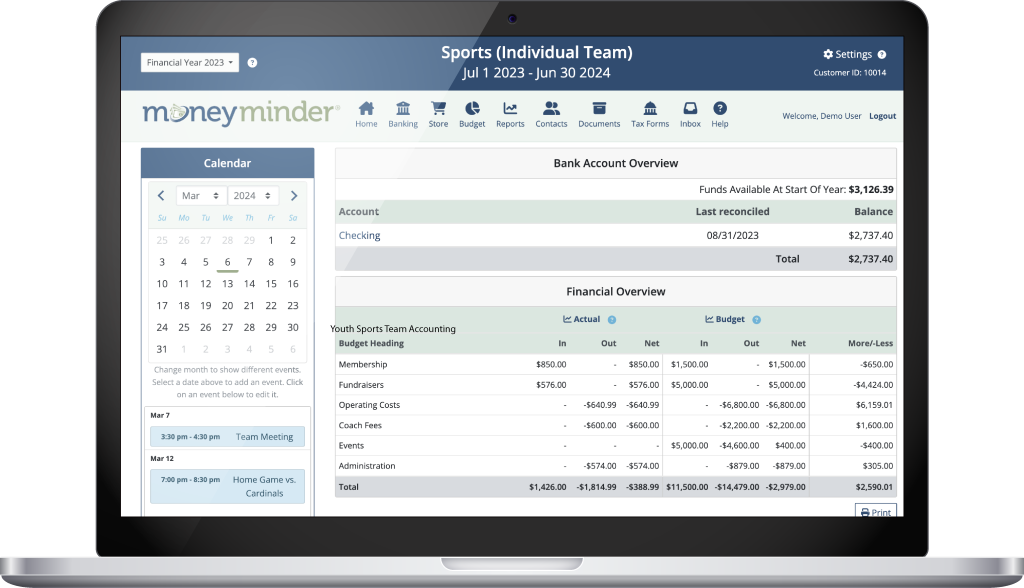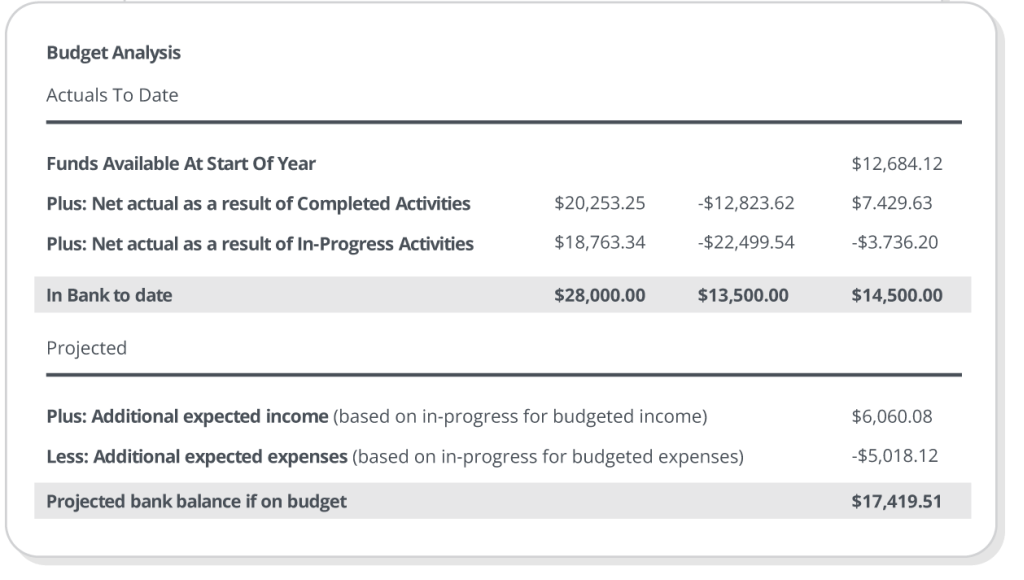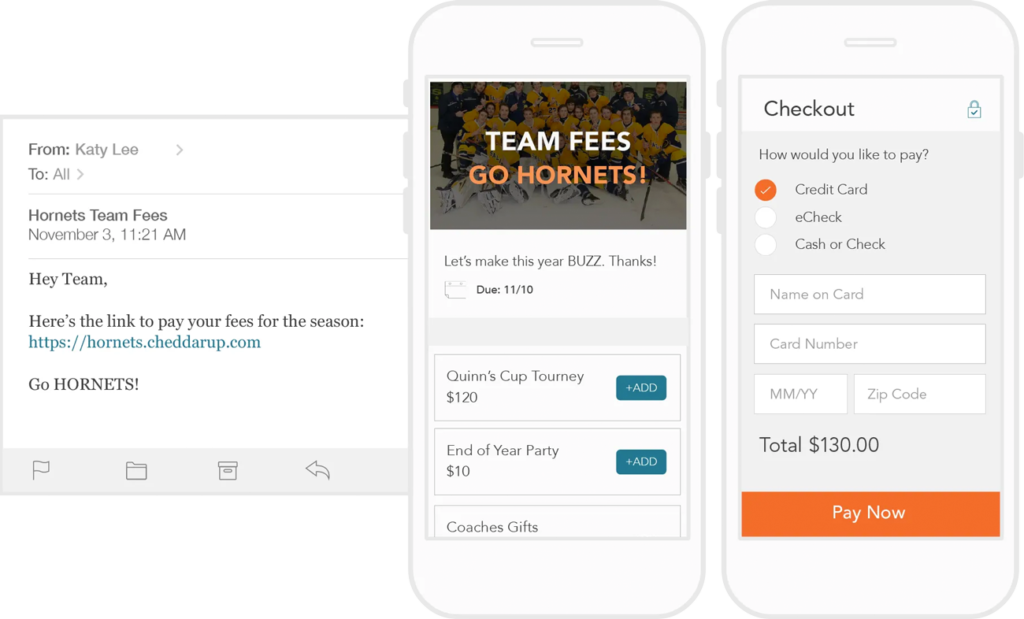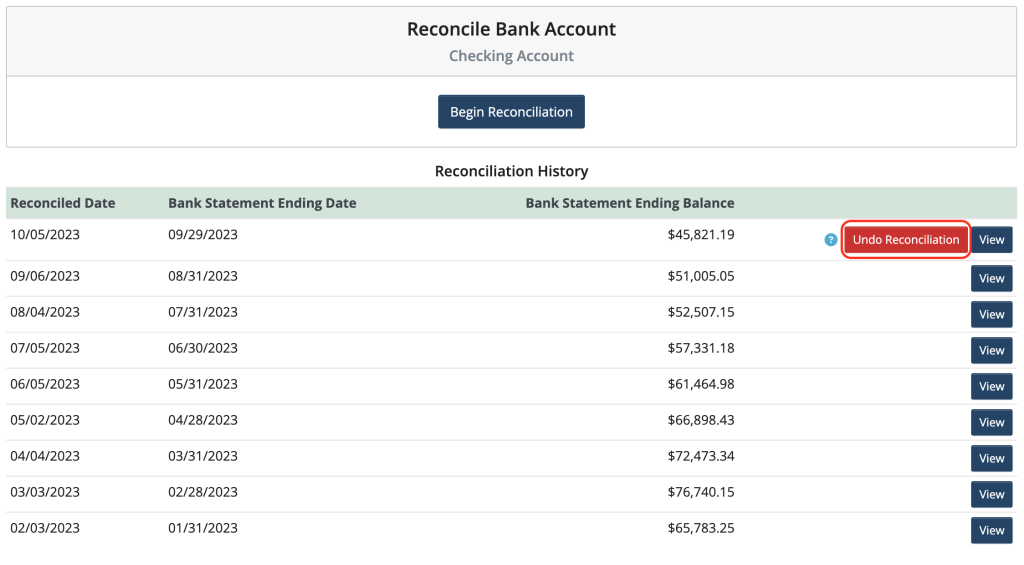Good accounting practices are essential for youth sports teams to ensure transparency and accountability of the funds that are collected and used. In a nutshell, you want to make sure player dues and other donations are put to good use, without extending beyond your means.
With limited resources, teams must strategically allocate funds for essential expenses such as equipment, uniforms, field rental fees and travel costs. By managing resources responsibly, youth sports teams can maximize the impact of contributions while maintaining financial sustainability.
Yet, in youth sports, this role is rarely taken on by someone with an accounting degree or even bookkeeping experience. It’s often the coach or a parent volunteer that manages the youth sports team or club accounting.
Is this you? How do you do accounting for youth sports? Where do you begin? Bookmark this playbook for sports team accounting and you’ll be sure to come back to it time and time again throughout the season.
15-Step Playbook for Youth Sports Team Treasurers
Pre-Season: Make a Plan
Don’t go into the season thinking the numbers will just take care of themselves. Decide on an organizational approach and you’ll thank yourself later. Here are some considerations for pre-season planning.
1. Decide on Your Accounting System
First and foremost, decide on your organizational approach. There are many choices when it comes to how to accomplish your sports team accounting. Here are a few of them, compared:
- Traditional Pen and Paper — While going at this the “old school” way has several serious drawbacks (transparency, transferability and susceptibility to errors), this is certainly the most cost-effective way to handle things.
- Spreadsheets — Versatile and customizable, spreadsheets are widely available, familiar, and almost as budget-friendly as the pen and paper method. However, they are still susceptible to errors and lack specialized features for sports teams.
- General Accounting Software — Tools like Quickbooks are sometimes used by sports teams if the treasurer already has an account, but typically the features (and price) are more robust than is needed for this use case. These tools can be complex and require training to be used effectively.
- Sports Team Accounting Software — Specifically designed to meet the needs of sports teams, sports team accounting software might have a learning curve, but not nearly as steep as a more general accounting program. If the right tool is selected, the associated costs can be offset by time savings, improved efficiency and greater accountability.

⇨ TRY IT: MoneyMinder Sports Team Accounting Software 30 Day Trial
2. Open a Bank Account
If you don’t already have one, establish a dedicated bank account in your team’s name. This provides a centralized and secure location for dues and fundraising proceeds, and a way to pay expenses. Just be sure team funds are clearly separated from personal finances in every way. You will likely not hold this role forever.
3. Choose Insurance
Since day one, we at MoneyMinder have always said, “run from organizations that don’t feel insurance is important.” If something happens to your team’s equipment or finances, you could personally be held financially responsible if you don’t have insurance.
4. Plan for Fundraising (Optional)
Explore fundraising initiatives to alleviate dues burdens and bolster team support. Revisit any past fundraising methods or explore innovative approaches to generate additional revenue. There are many different ideas and directions but here are some favorite articles about fundraising:
- Start a Concession Stand
- Raffle Ticket Fundraisers
- Easy Basketball Team Fundraisers
- Online Holiday Fundraisers
- Easy Football Team Fundraisers
- QR Codes at Fundraisers
- Sports Fundraising Trends
- Healthier Concession Stand Ideas
- Virtual Fundraising Ideas
- Cheerleading Fundraisers
Fundraising is especially key if your team is going above and beyond for additional tournaments or expensive equipment, to ease the burden for families.
5. Put Together a Budget
Assess the team’s composition and project expenses accordingly. Consider factors such as league fees, equipment costs, uniforms, facility rentals, referee fees, tournament costs, awards, year-end parties, travel fees, insurance and software costs. Be sure to update your cost estimates each year, as the price of things could have changed.
Once you know your costs, divide that by the number of players to figure out the dues owed per player. Be sure to incorporate a buffer in case players drop out or expenses rise. If you plan to do any fundraising and you are able to reliably estimate what you’ll bring in, be sure to factor that in.

6. Communicate What Each Player Owes
Now that you have a budget in place, you can collect dues from each player. Clearly communicate this information with a firm deadline for payment. You will want to take care of all of this before the season starts, because at that point you will have plenty else going on to have to deal with collections. Consider whether you will have a fee for late payment as an incentive for on-time payment.
7. Collect Dues
When it comes to collecting sports team dues, you have options. Here they are, with considerations for each.
- Bank Transfers — Convenient for direct transfers, but it can be hard to track what came in and from whom. Make sure all members have access to the transfer information and are comfortable with the process.
- Credit Cards — Don’t ever write down a person’s credit card number. You are best to go with a secure payment processor to handle transactions safely.
- Cash — Simple and straightforward with no fees, but cash payments are not usually a favorite of either party due to their untraceable nature and the security risks associated with handling cash.
- Check — Traditional and reliable, but again, not the most favorable because of the delayed nature and extra time for processing and handling.
- Online Payment Platforms — Options like PayPal, Square and PaySimple are meant for small business, require an account for both parties and come with a transaction fee. They do not have built-in features to help you track individual payments, send reminders and collect registration information.
- P2P Payment Platforms — Venmo, Zelle and CashApp are “Person-to-Person” and are not truly meant to be for use cases like this, although they are widely used. Be absolutely certain these accounts are not tied to your personal one, and have a good understanding of liability and check with your insurance on whether this type of payment would be covered. Refunds may also be more difficult with these methods.

⇨ PREFERRED METHOD — MoneyMinder Store
Risk-free collection of sports team dues that includes registration information and waivers. Works with Stripe, PayPal, Square, Credit Cards, e-Checks and Bank Transfers and includes reminder notifications.
In-Season: Manage & Track Income & Expenses
Every penny that comes in and out should be recorded using your chosen accounting method.
8. Money In
Use your chosen accounting system to track all income that comes in from dues, fundraisers or other donations. Categorize each source of income accurately in your Budget or Chart of Accounts.
9. Money Out
Prioritize timely payment of bills to uphold positive vendor relations and maintain professionalism. Monitor every expense, whether it is a facility rental or a team-related cost. Similar to income, you’ll also want to track expenses in your chosen accounting method to ensure it is allocated to the right category in your Budget or Chart of Accounts.
10. Keep Records
Be sure to keep all receipts, and consider a tool that helps you digitize things like receipts and check images to preserve records. This ensures compliance with auditing requirements.
11. Balance the Books
Regularly reconcile income and expenses to maintain financial accuracy. Balancing the books involves comparing financial records to bank statements to identify discrepancies and ensure everything is accurately accounted for. This crucial step helps identify any errors early on. If you let things go too long it can be really difficult to track down errors.

⇨ LEARN HOW: With the Bank Reconciliation Guide
12. Sports Team Treasurer Report
Best practice is to conduct a monthly mini-audit and a monthly Treasurer’s report along with your bank reconciliations. Why? This is the best way to catch both errors and fraud. This is somewhat of a formal report, too. No sticky notes with bank balances written on them.
What’s more, insurance companies like monthly reviews. Sometimes they won’t pay out on a claim that goes longer than a month because they believe it should be monitored monthly.
⇨ LEARN: How to Give the Treasurer’s Report (with Sample)
Post Season: Wrap Up & Planning Ahead
Just because the games are over doesn’t meant your job is complete. Take the final steps to wrap up a great season as sports team treasurer!
13. Check Your Balance and Make a Plan
If you have remaining funds at the end of the season, you’ll have to decide what to do with them. You could put it to a parent vote if you would like to be diplomatic. Here are some ideas:
- Plan an end-of-year party
- Get medals, trophies or awards made
- Roll the funds over to the next year, and consider reducing dues as a result
- Issue a refund
14. File Tax Forms
Being licensed in your state does not mean you are exempt from taxes. You must have a Letter of Determination for tax exempt status from the IRS in order to avoid paying federal taxes.
If your team is set up as a 501(c)(3), then you won’t have to pay taxes. But you will have to file a Form 990N, 990EZ, or 990 Long Form, depending upon how much revenue you generate, to the IRS. The 990-series forms provide information about your finances, activities and governance.

⇨ LEARN: Get the Federal Tax Guide for Nonprofits
15. Succession Planning
If you don’t anticipate a second term, consider who will be taking over your role the next season. Training your successor well in advance is the best way to set them up for success and facilitate a smooth handover of responsibilities.
⇨ LEARN: The Guide to Treasurer Transitions
Sports Team Accounting Doesn’t Have to Be Hard
Managing the finances of a youth sports team might seem daunting, but with the right approach, it can be manageable and even rewarding. By following this 15-step playbook to sports team accounting, you can ensure your team’s financial affairs are kept in order and running smoothly.
Looking for a partner in your success? Consider choosing MoneyMinder as your sports team accounting tool of choice. For over 20 years, we’ve been helping people just like you figure it all out. We’re here with you every step of the way, so start a 30-day trial and see why so many have given us 5-stars.

 Connect your Venmo account to MoneyMinder PRO to directly download transactions, saving you time and effort. You just review the transactions to ensure they are properly categorized and fill out any required fields.
Connect your Venmo account to MoneyMinder PRO to directly download transactions, saving you time and effort. You just review the transactions to ensure they are properly categorized and fill out any required fields. Connect your Bank, Paypal and Square accounts to MoneyMinder PRO to directly download transactions, saving you time and effort. You just review the transactions to ensure they are properly categorized and fill out any required fields.
Connect your Bank, Paypal and Square accounts to MoneyMinder PRO to directly download transactions, saving you time and effort. You just review the transactions to ensure they are properly categorized and fill out any required fields. Connect your Bank, Paypal and Square accounts to MoneyMinder PRO to directly download transactions, saving you time and effort. You just review the transactions to ensure they are properly categorized and fill out any required fields.
Connect your Bank, Paypal and Square accounts to MoneyMinder PRO to directly download transactions, saving you time and effort. You just review the transactions to ensure they are properly categorized and fill out any required fields. Join It is a membership management service that helps businesses and nonprofits effectively sell, track, and grow their membership.
Join It is a membership management service that helps businesses and nonprofits effectively sell, track, and grow their membership. Connect your Bank, Square and PayPal accounts to MoneyMinder PRO to directly download transactions, saving you time and effort. You just review the transactions to ensure they are properly categorized and fill out any required fields.
Connect your Bank, Square and PayPal accounts to MoneyMinder PRO to directly download transactions, saving you time and effort. You just review the transactions to ensure they are properly categorized and fill out any required fields.